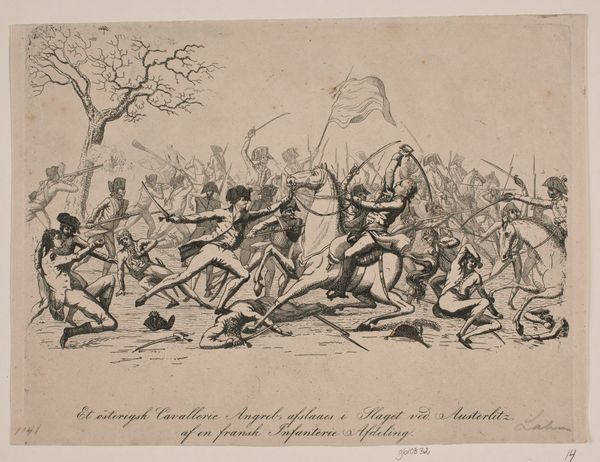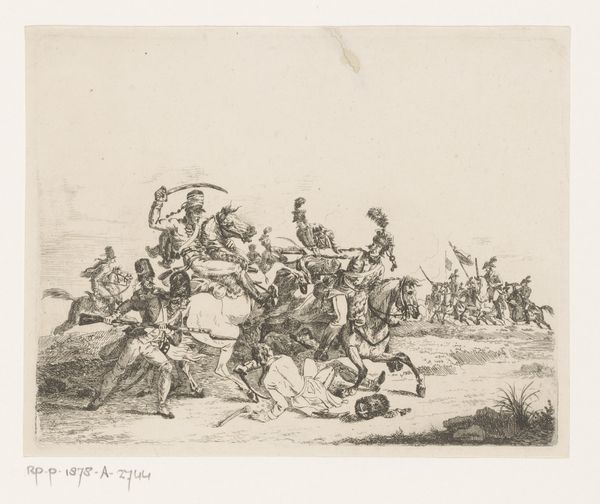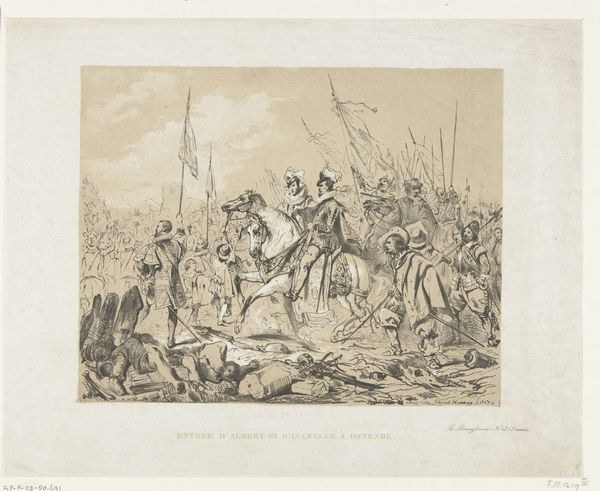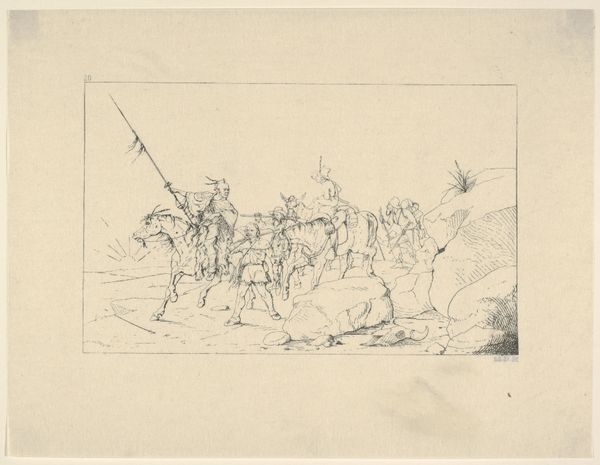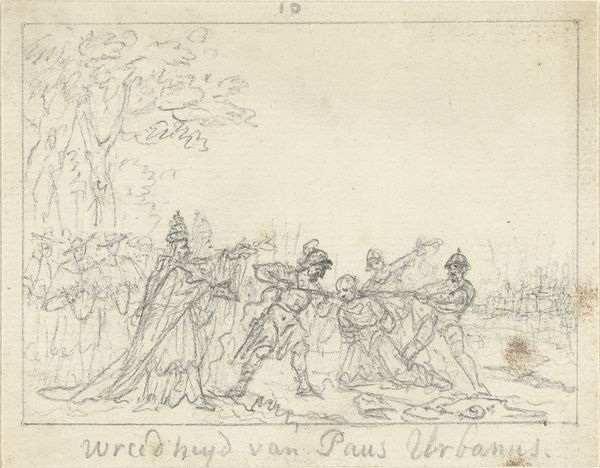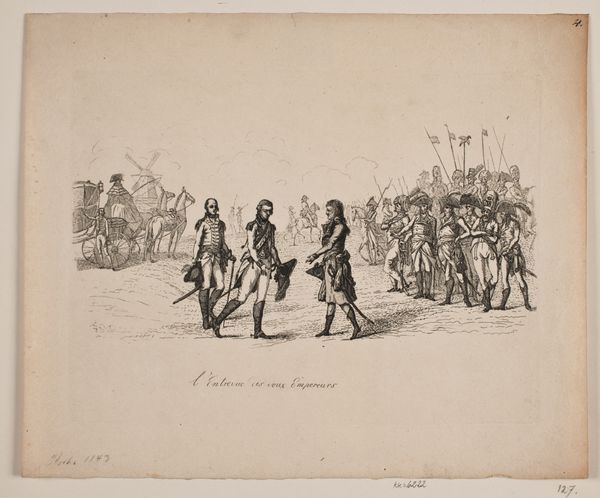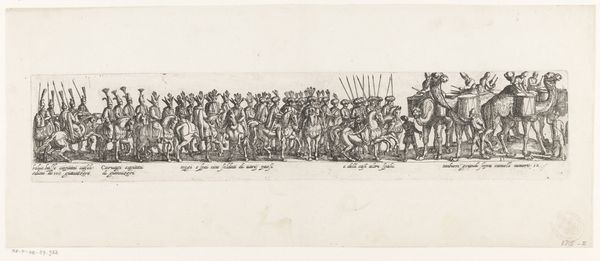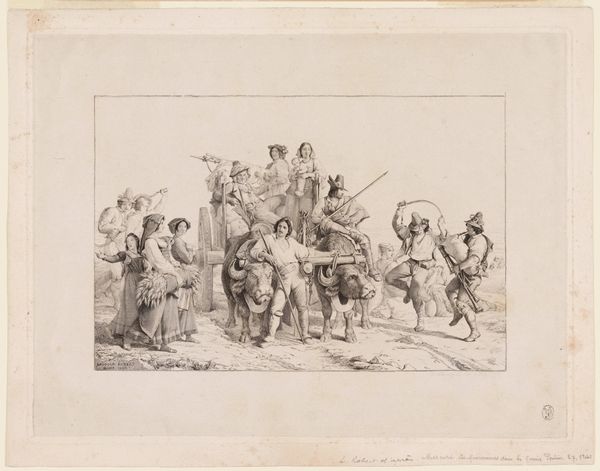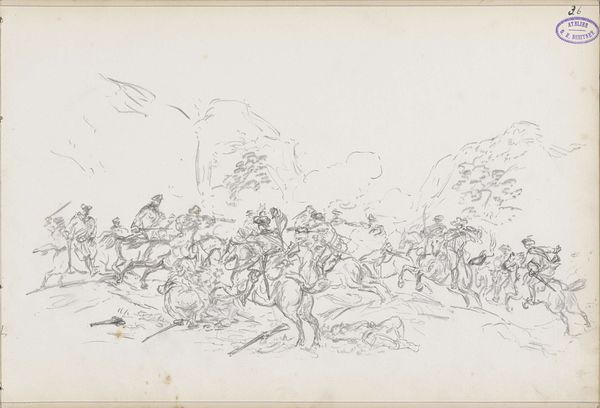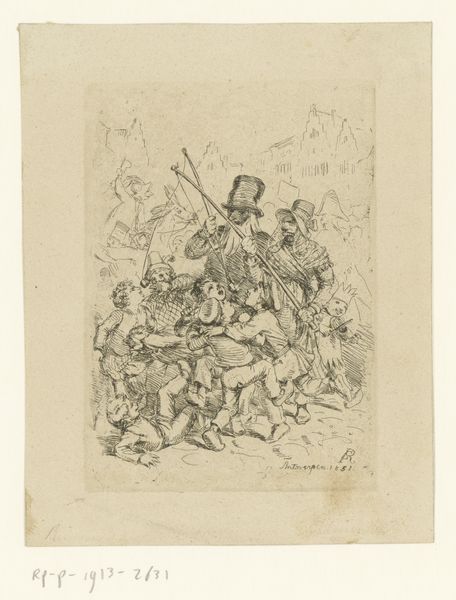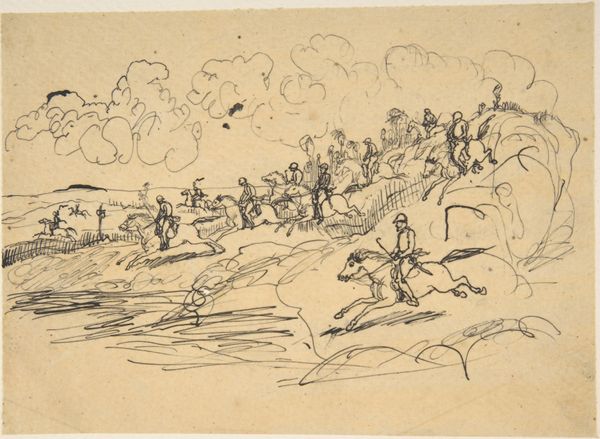
print, engraving
#
neoclacissism
# print
#
romanticism
#
history-painting
#
engraving
Dimensions: 165 mm (height) x 200 mm (width) (plademaal)
Gerhard Ludvig Lahde made this print of the Russian Guard in battle sometime around the early 19th century, using etching techniques. Etching involves coating a metal plate with a waxy, acid-resistant substance, then scratching an image into the wax. The plate is then immersed in acid, which bites into the exposed metal, creating lines. Ink is applied, the surface wiped clean, and the image is transferred to paper under great pressure. The process demands meticulous skill and control, from the initial drawing to the final print. Lahde's print captures a pivotal moment in battle, with incredible detail achieved through the etched lines. It shows a clash of military forces, a scene of violence, movement, and chaos. The stark, graphic nature of the print, a product of the etching process itself, lends a sense of immediacy and rawness to the scene. Considering the amount of labor involved, the print also speaks volumes about the mechanization of warfare, and the industrialization of both production and destruction that reshaped European society in the Napoleonic era.
Comments
No comments
Be the first to comment and join the conversation on the ultimate creative platform.
